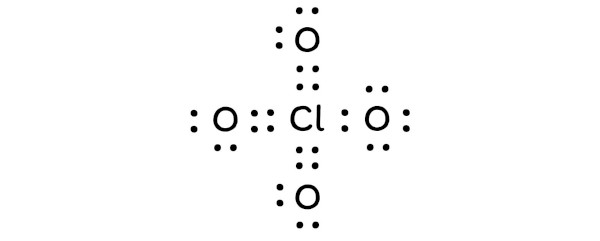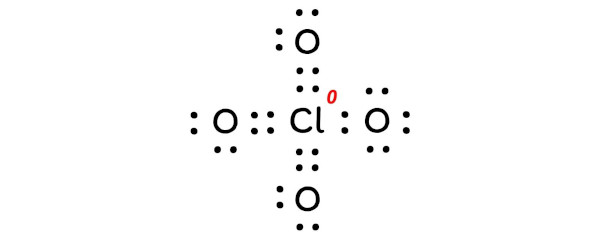
The Charge of ClO4 (Perchlorate ion) is 1-.
But the question is how can you find the charge on ClO4 (perchlorate ion)?
Well there are 2 methods by which you can find the charge of ClO4.
Lets dive right into these methods one by one.
You can also refer to the below video from which you will learn to find charge of any ion.
Method 1: By looking at what it is bonded to
The charge of ClO4 (Perchlorate ion) can be found out by looking at what it is bonded to.
So let’s take some examples of compounds that contain ClO4; like KClO4, HClO4, Mg(ClO4)2, etc.
Example 1: KClO4
In KClO4, the ClO4 is bonded to Potassium (K).
You know that the ionic charge of K is 1+.
So you can easily say that the charge of ClO4 should be 1-, then only it will get canceled out.
Hence the charge of ClO4 in KClO4 is 1-.
Example 2: HClO4
In HClO4, the ClO4 is bonded to Hydrogen (H).
And again, you know that the ionic charge of H is 1+.
So here also you can easily say that the charge of ClO4 should be 1-, then only it will get canceled out.
Hence the charge of ClO4 in HClO4 is 1-.
As seen from the above examples,
The charge of ClO4 is 1-.
In this way, you can easily find the charge of ClO4 by looking at what it is bonded to.
Method 2: By calculating the formal charge using lewis structure
In order to calculate the formal charge on ClO4 (Perchlorate ion), you should know the Lewis dot structure of ClO4 (Perchlorate ion).
Here is the lewis structure of ClO4.

Now using the above lewis structure of ClO4, you have to find the formal charge on each atom that is present in the ClO4 molecule.
For calculating the formal charge, you need to remember this formula;
Formal charge = Valence electrons – Nonbonding electrons – (Bonding electrons)/2
You can see the bonding and nonbonding electrons of ClO4 from the image given below.

So now let’s calculate the formal charge on each individual atom present in ClO4.
Formal charge on Chlorine atom:
Valence electrons = 7 (as it is in group 17 on periodic table) [1]
Nonbonding electrons = 0
Bonding electrons = 14
So according to the formula of formal charge, you will get;
Formal charge on Nitrogen = Valence electrons – Nonbonding electrons – (Bonding electrons)/2 = 7 – 0 – (14/2) = 0

So the formal charge on chlorine atom is 0.
Formal charge on double bonded Oxygen atom:
Valence electron = 6 (as it is in group 16 on periodic table) [2]
Nonbonding electrons = 4
Bonding electrons = 4
So according to the formula of formal charge, you will get;
Formal charge on double bonded Oxygen = Valence electrons – Nonbonding electrons – (Bonding electrons)/2 = 6 – 4 – (4/2) = 0

So the formal charge on double bonded oxygen atom is 0.
Formal charge on single bonded Oxygen atom:
Valence electron = 6 (as it is in group 16 on periodic table)
Nonbonding electrons = 6
Bonding electrons = 2
So according to the formula of formal charge, you will get;
Formal charge on single bonded Oxygen = Valence electrons – Nonbonding electrons – (Bonding electrons)/2 = 6 – 6 – (2/2) = 1-

So the formal charge on single bonded oxygen atom is 1-.
Now let’s put all these charges on the lewis dot structure of ClO4.

So there is overall 1- charge left on the entire molecule.
This indicates that the ClO4 (Perchlorate ion) has 1- charge.
I hope you have understood the above calculations of ClO4 (Perchlorate ion). But for your tests, you don’t need to remember the entire calculations. You should just try to remember that ClO4 has 1- charge.
Check out some other related topics for your practice.
Related topics:
Charge of Manganese (Mn)
Charge of Strontium (Sr)
Charge of Boron (B)
Charge of Tin (Sn)
Charge on ClO3 (Chlorate ion)
Jay is an educator and has helped more than 100,000 students in their studies by providing simple and easy explanations on different science-related topics. With a desire to make learning accessible for everyone, he founded Knords Learning, an online learning platform that provides students with easily understandable explanations.
Read more about our Editorial process.
